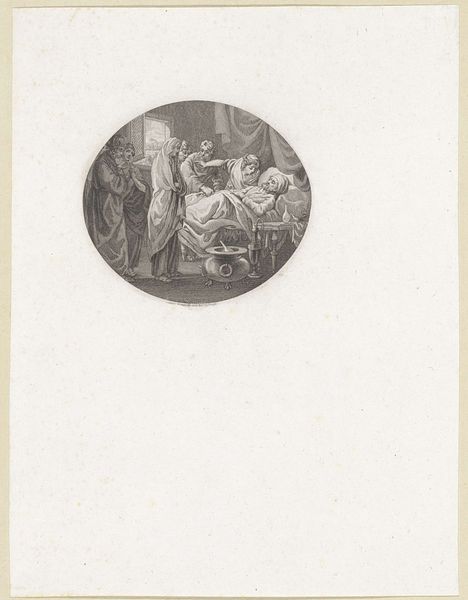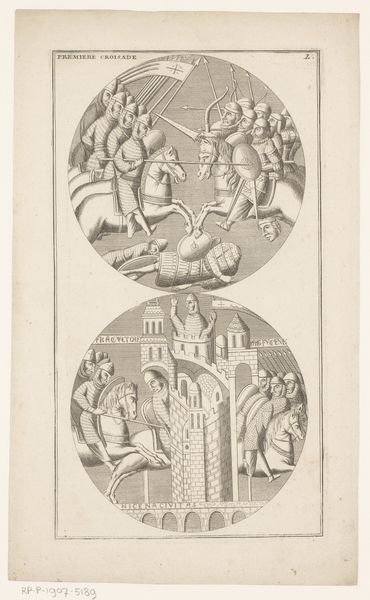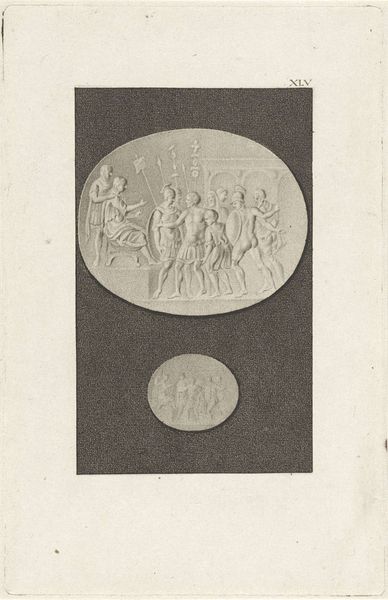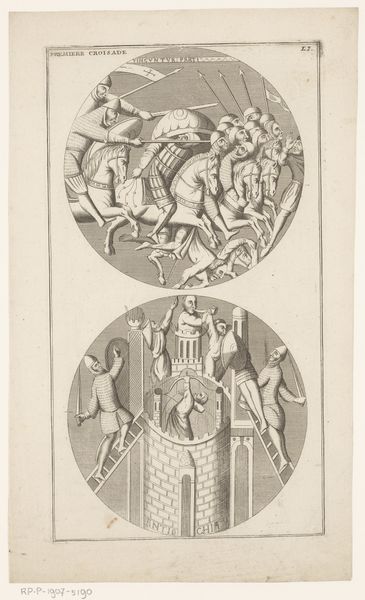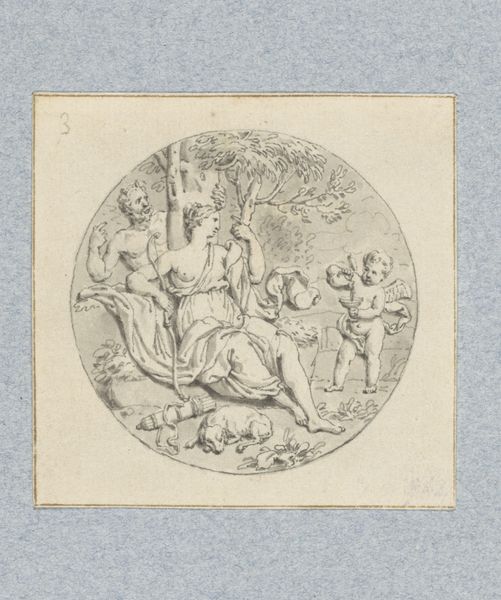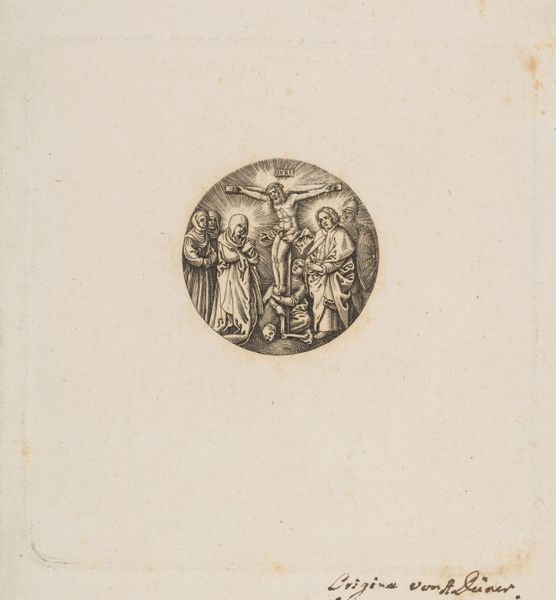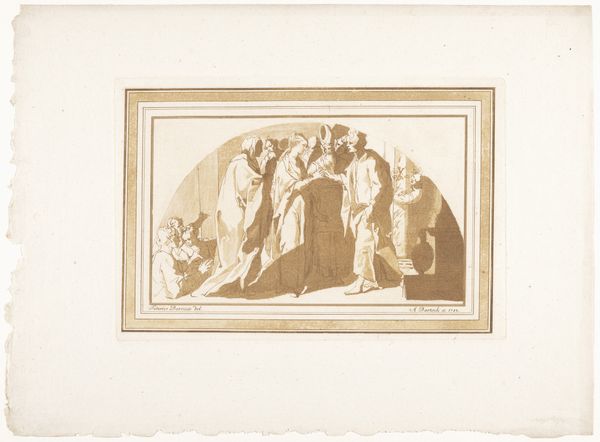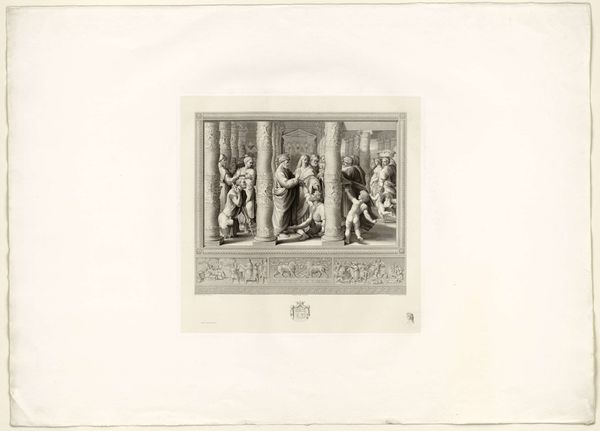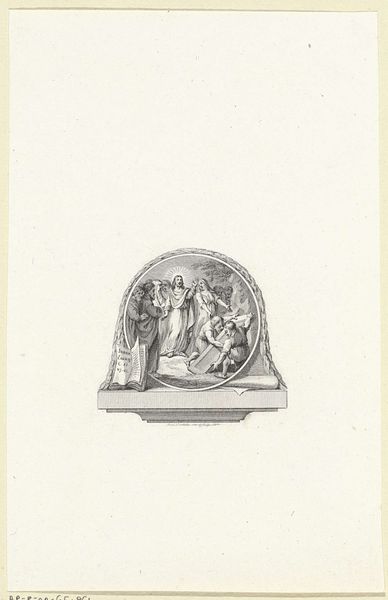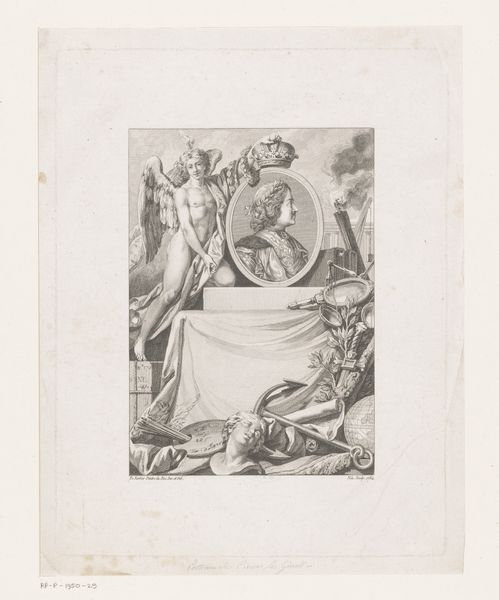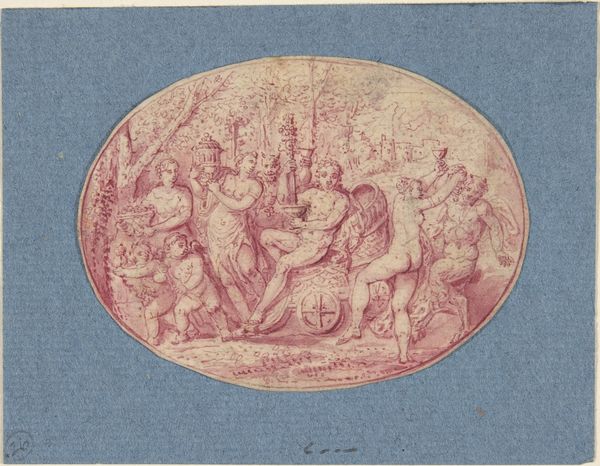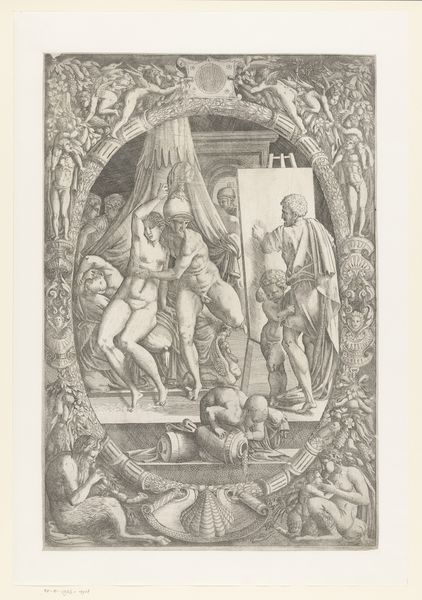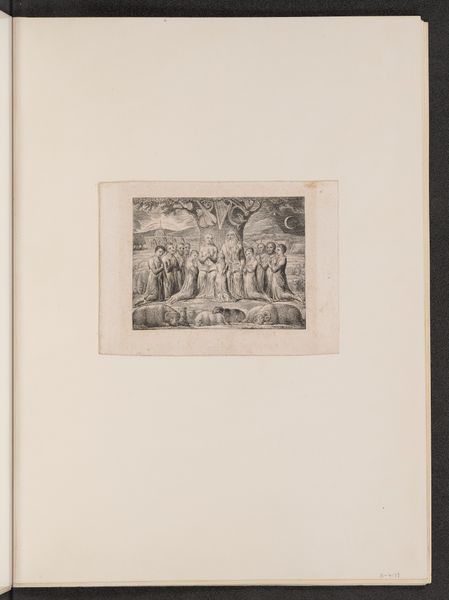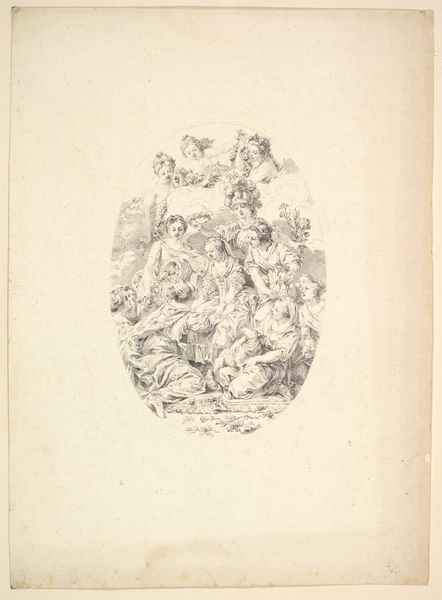
engraving
#
portrait
#
neoclacissism
#
allegory
#
old engraving style
#
retro 'vintage design
#
personal sketchbook
#
geometric
#
ancient-mediterranean
#
history-painting
#
engraving
Dimensions: height 423 mm, width 388 mm
Copyright: Rijks Museum: Open Domain
Curator: This engraving captures the Gemma Augustea, a famed Roman cameo. Abraham Girardet created this version sometime between 1774 and 1823. Editor: My first impression is that it's incredibly busy! There’s a real tension between the intricate detail and the almost overwhelming composition. What strikes you? Curator: Well, given it's an engraving after a cameo, I am drawn to the craftsmanship. Consider the skill involved in translating a three-dimensional, layered gemstone into a two-dimensional print. How does Girardet convey depth and texture? What tools and techniques did he employ? Editor: The clear division into upper and lower registers is so striking. It’s creating a visual hierarchy. The upper zone is occupied by idealized figures, almost floating, while below we see more grounded, seemingly mortal figures. What’s the narrative purpose of this two-tiered structure? Curator: The upper register depicts the apotheosis of Emperor Augustus, with figures like Roma and allegorical representations of power. Below, we likely see contemporary figures paying homage. The engraving functions as a tool to circulate and disseminate Roman Imperial ideology. How accessible would such a work have been, and for whom was it intended? Editor: Semiotically, the symbols are quite potent. The eagle, the laurel wreaths, the idealized physiques – it's all carefully constructed to convey power and legitimacy. Look how Augustus is elevated, literally and figuratively, above the earthly realm! How does Girardet’s interpretation, his choices of line and tone, impact the overall message compared to the original cameo? Curator: That's precisely what interests me—Girardet's labor in the reproduction and reinterpretation of this important piece. Who commissioned the work? What sort of market did he hope to tap into with this piece? The availability of similar engravings, and how they shaped and circulated ideas about Roman history is a key question here. Editor: It’s certainly given me much to think about in how images can translate, and what is being passed through time. Curator: And to remind us that seemingly 'classical' images are embedded in layers of artistic labor and material context.
Comments
No comments
Be the first to comment and join the conversation on the ultimate creative platform.
